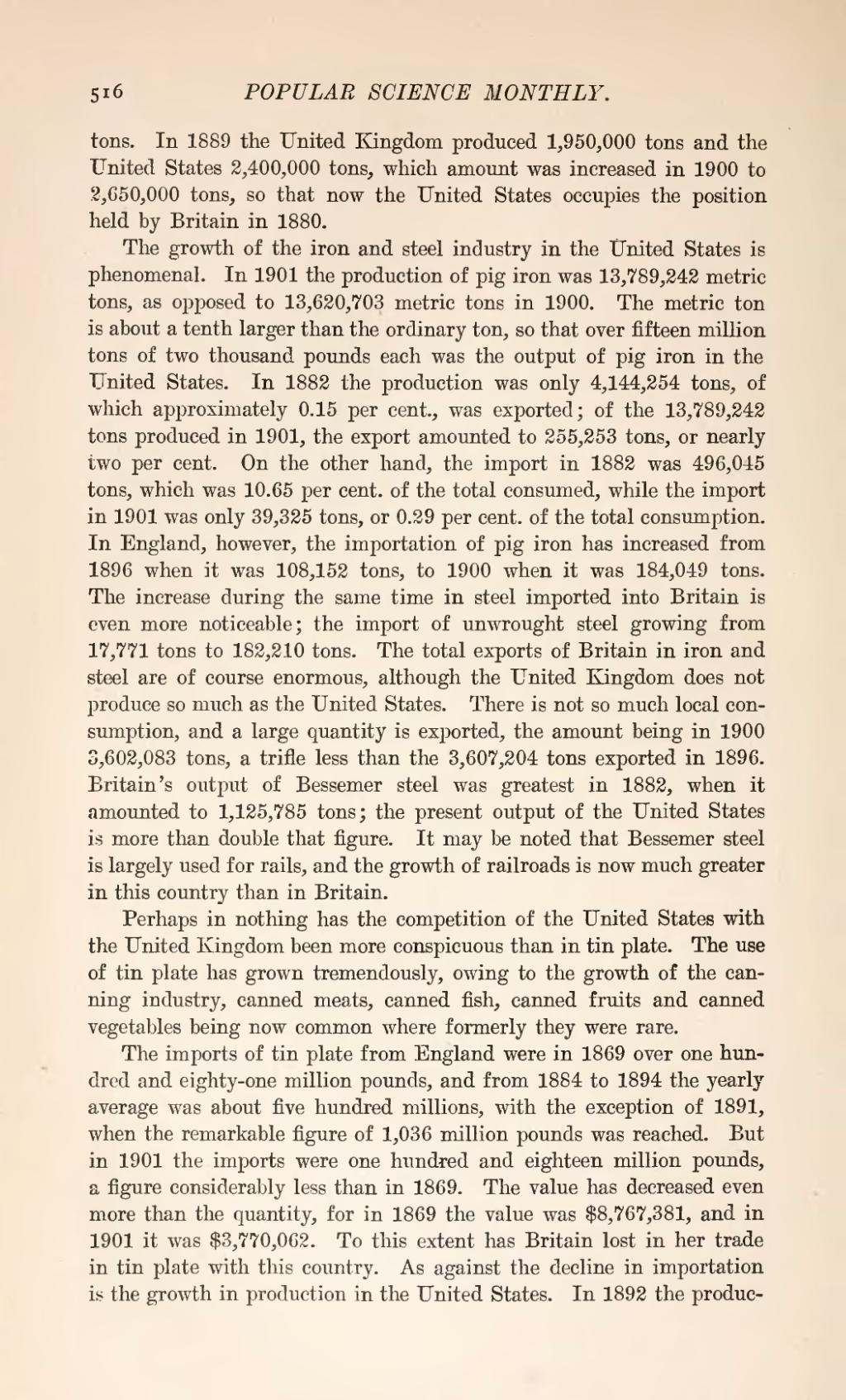tons. In 1889 the United Kingdom produced 1,950,000 tons and the United States 2,400,000 tons, which amount was increased in 1900 to 2,650,000 tons, so that now the United States occupies the position held by Britain in 1880.
The growth of the iron and steel industry in the United States is phenomenal. In 1901 the production of pig iron was 13,789,242 metric tons, as opposed to 13,620,703 metric tons in 1900. The metric ton is about a tenth larger than the ordinary ton, so that over fifteen million tons of two thousand pounds each was the output of pig iron in the United States. In 1882 the production was only 4,144,254 tons, of which approximately 0.15 per cent., was exported; of the 13,789,242 tons produced in 1901, the export amounted to 255,253 tons, or nearly two per cent. On the other hand, the import in 1882 was 496,045 tons, which was 10.65 per cent, of the total consumed, while the import in 1901 was only 39,325 tons, or 0.29 per cent, of the total consumption. In England, however, the importation of pig iron has increased from 1896 when it was 108,152 tons, to 1900 when it was 184,049 tons. The increase during the same time in steel imported into Britain is even more noticeable; the import of unwrought steel growing from 17,771 tons to 182,210 tons. The total exports of Britain in iron and steel are of course enormous, although the United Kingdom does not produce so much as the United States. There is not so much local consumption, and a large quantity is exported, the amount being in 1900 3,602,083 tons, a trifle less than the 3,607,204 tons exported in 1896. Britain's output of Bessemer steel was greatest in 1882, when it amounted to 1,125,785 tons; the present output of the United States is more than double that figure. It may be noted that Bessemer steel is largely used for rails, and the growth of railroads is now much greater in this country than in Britain.
Perhaps in nothing has the competition of the United States with the United Kingdom been more conspicuous than in tin plate. The use of tin plate has grown tremendously, owing to the growth of the canning industry, canned meats, canned fish, canned fruits and canned vegetables being now common where formerly they were rare.
The imports of tin plate from England were in 1869 over one hundred and eighty-one million pounds, and from 1884 to 1894 the yearly average was about five hundred millions, with the exception of 1891, when the remarkable figure of 1,036 million pounds was reached. But in 1901 the imports were one hundred and eighteen million pounds, a figure considerably less than in 1869. The value has decreased even more than the quantity, for in 1869 the value was $8,767,381, and in 1901 it was $3,770,062. To this extent has Britain lost in her trade in tin plate with this country. As against the decline in importation is the growth in production in the United States. In 1892 the produc-
